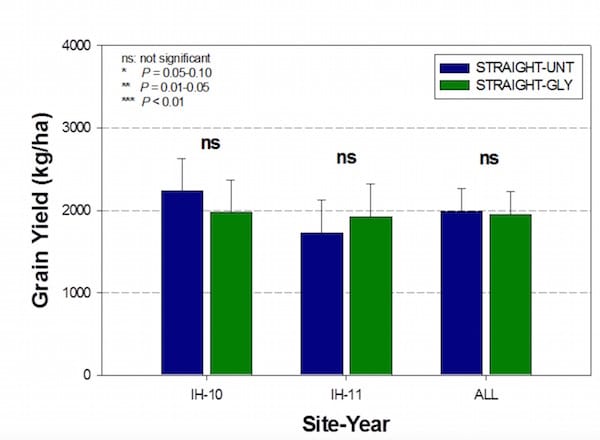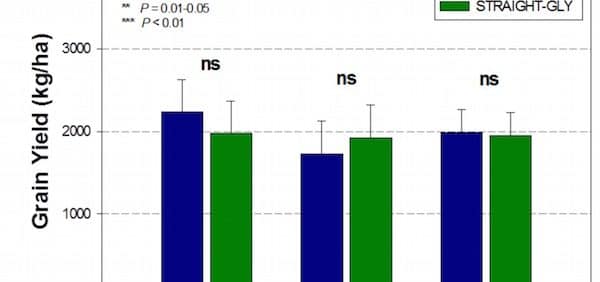Canola does not necessarily need a spray to dry down the field ahead of straight combining. Many glyphosate-tolerant canola varieties have been straight cut with no dry down application. Weed-free fields with time to mature fully can often be straight cut with no need for a dry-down application.
Here are some scenarios to consider when making the decision:
Uneven crop. Fields with variable stages need to be scouted carefully to determine which stage will contribute most to overall yield. If later stages are the minority and the greatest yield contribution is from earliest stages, applications to terminate green plants pre-maturely may not be necessary. Swathing may best suit an extremely variable stand.
High humidity or cool wet conditions at harvest. In this situation, Reglone may help dry down mature crop that seems to stay green.
High population of green perennial weeds. Glyphosate or Heat would help dry down these weeds for more efficient straight cutting.
More about the product options…
If growers choose to spray to even out or dry down the crop and weeds, the choices are glyphosate, Heat and Reglone.
Reglone. Don’t apply Reglone too early. Reglone is a contact herbicide (only kills what it contacts) and is registered in canola to dry immature green weed or crop material to facilitate harvest. Reglone does not advance the maturity of the crop. It shuts the plant down quickly and basically STOPS it from maturing, which can lock in high green seed levels if applied prematurely. The recommended timing for application on canola is when 60 to 75% of the seed has turned brown, which is past the stage when swathing would typically be recommended. Applying Reglone earlier may result in higher green seed. The label indicates that it should be only applied to napus canola to facilitate dry down of lodged canola crops. Efficacy will be maximized with higher water volumes (91 to 222 L per acre (20-50 gal/ac) ground or 18 L per acre aerial). Growers using Reglone on canola to be straight combined take note: Reglone can significantly increase both pod shatter and pod drop if harvesting is delayed, so be prepared to combine as soon as green seed and seed moisture have reached suitable levels.
Glyphosate is registered for pre-harvest perennial weed control in canola and may provide harvest management benefits. If a field can be sprayed during the longer, warmer days in August, then glyphosate can accelerate crop dry down compared to nature’s normal progression. However, applications in September (when days are shorter and tend to be cooler) should be made with perennial weed control as the main goal. Any benefit to crop dry down should be seen as a bonus because at this time of year it can take weeks to see green material dry down. If the canola is glyphosate tolerant, then obviously no crop dry down will occur. Glyphosate is to be applied when the majority of seeds are yellow to brown in colour. Overall seed moisture has to be 30% or less. NOTE: Glyphosate is not to be used as a desiccant since seed should already be physiologically mature before it goes on, providing little drydown benefit aside from the grass green weeds or very late canola plants within the mature stand.

Heat LQ (Group 14 saflufenacil) is a contact product that works on all canola, including glyphosate-tolerant varieties. The application timing is 60-75% seed colour change. The pre-harvest interval is three days. Heat LQ can be used alone or in a tank mix with glyphosate. Alone: When applied as a stand alone with Merge adjuvant at 400 ml/ac, BASF recommends high water volumes for good coverage. Treat it more like a desiccant. With glyphosate: BASF recommends growers treat it as they would the straight glyphosate application. The benefit to the canola producer is more rapid dry down of crop and weeds over glyphosate alone. Merge is still recommended with the tank mix.
Product is applied. Typically, how many days does it need until combining can start?
Reglone: Up to 5 days
Heat: 5-10 days
Glyphosate: 7-14 days
Swathing: 7-10 days
Further reading:
Top 10 tips to lower straight combining risk
Risk situations for straight combining canola
Canola Encyclopedia section on desiccation

